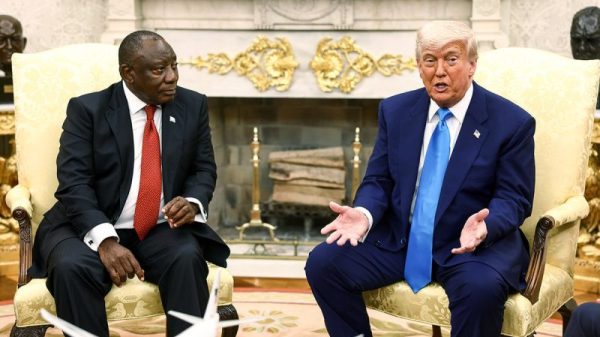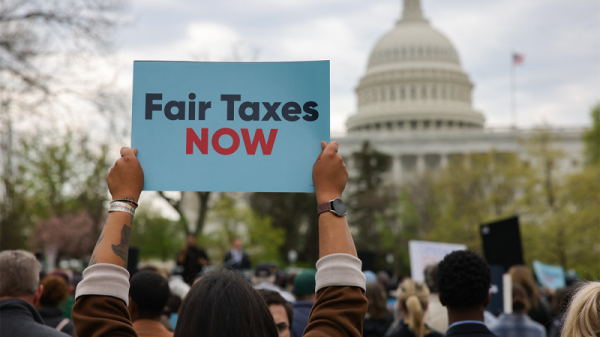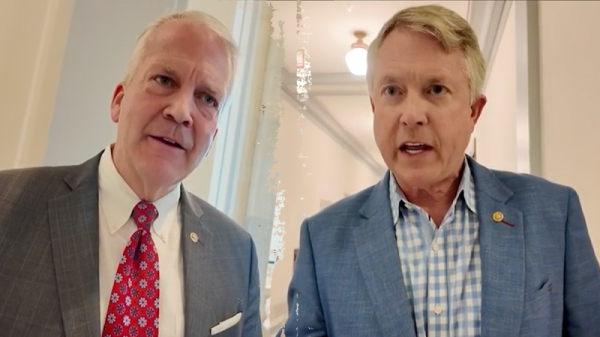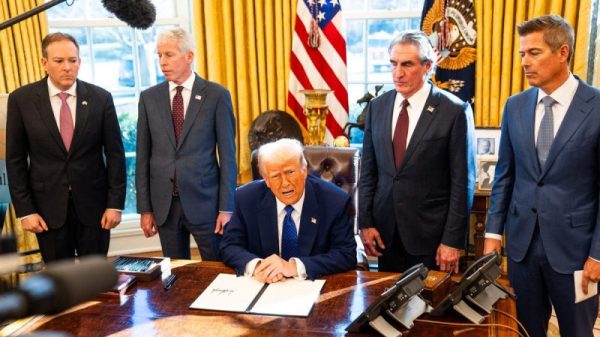Early in her career, Arati Prabhakar led the development of a self-piloting ship for a secretive U.S. military research agency. Now she’s the White House’s top technology official — the first to hail from a defense background since the Cold War and a representative of Washington’s new hard-line consensus on China.
For three decades, the United States threw itself headlong into globalization, backed by the confidence that while a rising tide lifts all boats, America’s vessel would rise the highest. China’s technological ascent has shaken that self-assurance and prompted a broad policy reversal.
“We had an oversimplified model for a long time, for a number of decades,” Prabhakar said in an interview with The Washington Post. “That oversimplified model was that markets and globalization would solve all the problems.”
Prabhakar’s early specialty was semiconductor research, a rare background among senior policymakers. That technical knowledge has come into use, as she has helped the Biden administration craft the largest industrial policy push in decades, in an effort to help the United States retain its technological lead over China. Semiconductors — the brains of computers — are the program’s centerpiece.
“It’s the biggest industrial policy initiative in the U.S. since the Second World War,” said Gary Hufbauer, a former Treasury deputy assistant secretary and now a senior fellow at the Peterson Institute for International Economics. “The only thing that the U.S. did which was comparable was the interstate highway system back in the 1950s.”
Kevin Wolf, a former assistant commerce secretary for export administration, says the Biden administration has enacted the strictest technology export controls against China in recent memory, adopting the policy position that China having the capability to produce advanced computing systems indigenously is a “per se national security threat” to the United States.
The hard-line shift is reflected in the appointment of Prabhakar, 65, as the president’s science and technology adviser in 2022. Her recent predecessors were all scholars from civilian fields like biology and meteorology.
In contrast, Prabhakar previously oversaw the Pentagon’s futuristic technologies research agency, the Defense Advanced Research Projects Agency (DARPA). Her team at the White House’s Office of Science and Technology Policy now is tasked with thorny questions of how to accelerate U.S. innovation in technologies with military applications — semiconductors, telecommunications and quantum computing — at the same time curbing U.S. research connections to China without veering into racial profiling.
Many of these projects will take far longer than a four-year presidential term to accomplish, a recognition that the technological rivalry with China may last decades, as the Cold War did.
Her team is already maneuvering to wrangle commitments from allied nations to support U.S. wireless technologies over China’s for the 6G generation, which won’t deploy until around 2030. U.S. officials had been caught flat-footed with 5G, with China getting a jump-start on 5G research and development as well as and rolling out its networks faster.
“It is the right time to start lining everyone up,” Prabhakar said about building a 6G coalition around the U.S. position.
Her office sits in the Eisenhower Executive Office Building on the White House grounds, down a hallway checkered black-and-white like a chess board. The Bruce Springsteen lyric “Meet me in a land of hope and dreams” is emblazoned across the wall.
After immigrating to the United States from India with her parents as a child, Prabhakar earned a PhD in applied physics from Caltech, then strayed from the academic career path. She was working at DARPA in 1986 at the tail end of the Cold War.
“The Soviet Union ended while I was at DARPA, and so I saw what an enormous shift started in how we thought about national security,” she said.
Following the Soviet Union’s dissolution in 1991, one of her colleagues went to brief Gen. Colin Powell, chairman of the Joint Chiefs of Staff, about submarines, only for Powell to remark that they didn’t care about submarines anymore. Washington downsized its military and embraced globalization, secure in its position as the unquestioned world leader.
“We were riding high,” said Rob Atkinson, founder of the Information Technology and Innovation Foundation. “We were the center of the internet and the IT economy. China was nothing. … We assumed that would continue in perpetuity.”
China’s unexpected emergence as a serious technological rival has prompted a return to a Cold War-like chill. President Donald Trump began the pivot, launching a trade war against China. Since arriving in the Oval Office, President Biden — who criticized those policies at first — has surprised many by doubling down on Trump’s tariffs and export controls, though with more measured rhetoric and a focus on multilateral cooperation.
National security adviser Jake Sullivan announced in September 2022 that the United States could no longer just maintain a “relative” technological lead over rivals and “must maintain as large of a lead as possible.” Soon after, the Commerce Department, led by Gina Raimondo, fired a fusillade of technology export controls at China.
Prabhakar’s team has been working on a longer-term research and development strategy, including directing research projects in quantum computing and cancer treatment, and trying to wrangle multiple agencies to cooperate to squeeze out more radio spectrum for emerging technologies in an effort to get a jump on 6G in competition against China.
The Biden administration also has leaned hard into industrial policy in key technological sectors like chips and telecommunications gear, with the help of $52 billion in funding from the bipartisan Chips and Science Act.
Ken Zita, a telecom expert who advised the Biden administration on industrial policies, said Washington was making the leap from “no industrial policy” to “having one” after many years in which industrial planning by the federal government was deeply out of fashion.
“They’ve had to take it from whole cloth, and say, ‘What can we do? Where can we act?’” Zita said.
A major challenge for the Biden administration has been how to pursue this policy shift without fanning anti-Chinese sentiment.
Prabhakar’s team is drafting research security guidelines for universities across the nation on how they should limit and monitor research relationships with China and other countries deemed adversaries. This task was inherited from the Trump administration.
Prabhakar said her team is now “pretty close” to a final version of the rules, though she stopped short of saying when they may be released. She said that after they released a draft version of the rules for comment last year, feedback from the research community gave her pause, including input that the requirements for universities were too onerous.
“It’s possible to put in so much process that you actually exacerbate the problem,” she said. The House Committee on Science, Space and Technology questioned Prabhakar in February over the delays in producing a final version of the rules. She told the committee that drafting the regulations had turned out to be more complex than expected.
“Doing this in a way that respects every individual, their rights as an individual and respecting their dignity, I think, is critically important,” she said. “Not exacerbating anti-Asian bias in the environment that we are in — absolutely key.”
The draft guidelines issued by her office for comment calls for research institutes’ training programs to include instruction on “the importance of nondiscrimination as a guiding principle,” though it isn’t entirely clear what this would look like in practice.
More broadly, the Biden administration’s approach to China has its share of skeptics. Some foreign governments suspect the export controls are more about trade protectionism than national security necessity.
“When I do travel — and by overseas l mean Taiwan, Japan, Korea, Switzerland, Germany, the Netherlands, U.K., you know, allied countries — almost to a person, they don’t really understand what the national security objective is that the U.S. government is trying to accomplish with all these new controls,” said Wolf, the former assistant commerce secretary.
Some, such as Atkinson, say the grants for building new U.S. technological hubs have been distributed too diffusely.
“The whole point of this was you can’t have 50 places,” he said. “There’s not enough money. There’s not enough technology to go around.”
Prabhakar defended these measures as part of a carefully considered long-term plan to ensure U.S. competitiveness.
“It’s important to say that this is a really carefully calibrated strategy. It’s not saying, ‘We’re going to roll up the sidewalks and never trade with anyone else around the world.’ It’s very globally engaged, working with our allies and partners.”







































